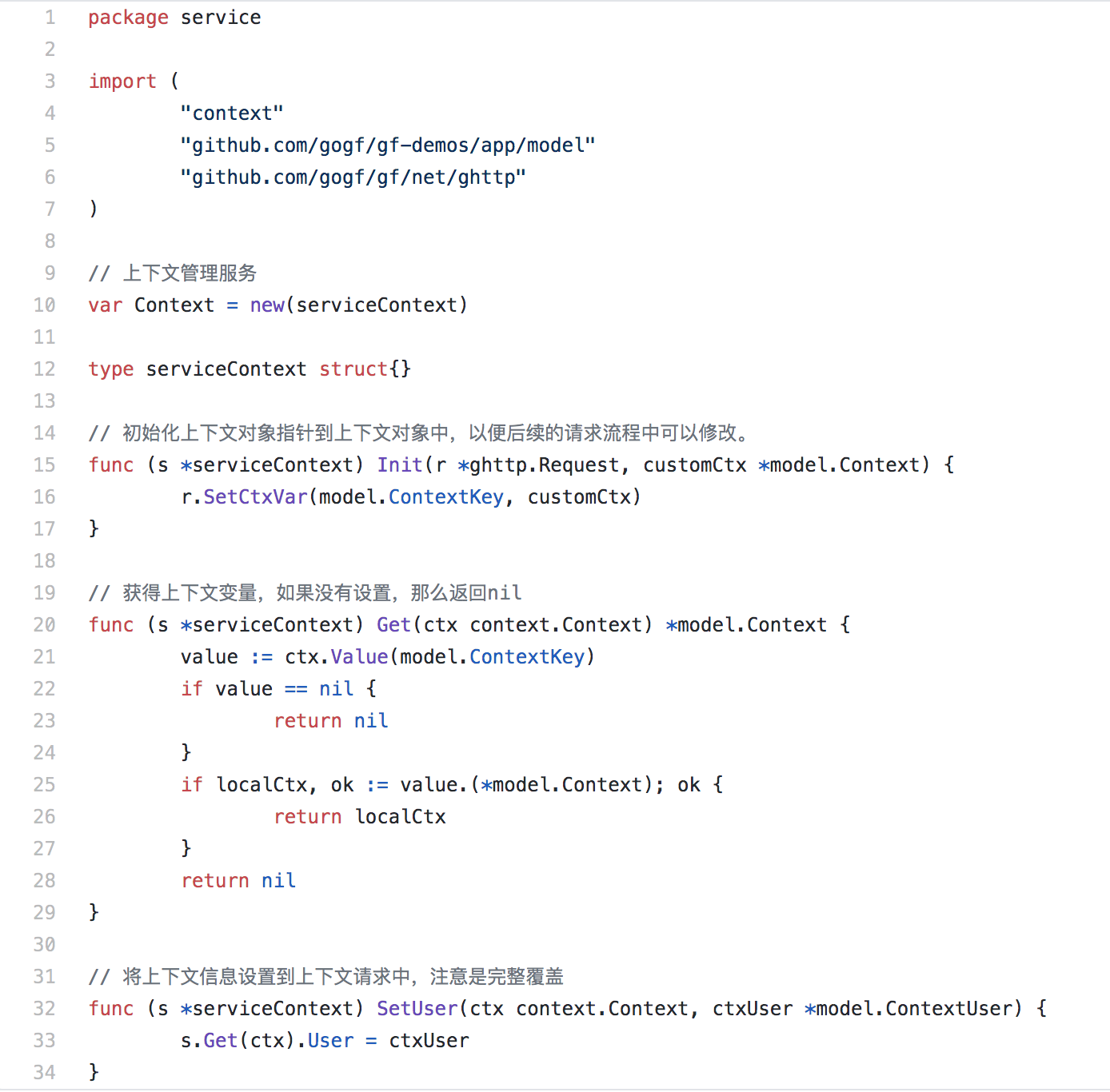上下文变量指的是标准库的context.Context,是一个接口对象。主要用于goroutine的异步IO控制,以及流程变量传递。
在Go的HTTP请求流程中,不存在”全局变量”获取请求参数的方式,只有将上下文context变量传递到后续流程的方法中,而context上下文变量即包含了所有需要传递的共享变量。并且该context中的共享变量应当是事先约定的,并且往往存储为对象指针形式。
结构定义
在该示例中,我们的上下文变量的数据结构定义为:https://github.com/gogf/gf-demos/blob/master/app/model/context.go
// 请求上下文结构type Context struct {Session *ghttp.Session // 当前Session管理对象User *ContextUser // 上下文用户信息}// 请求上下文中的用户信息type ContextUser struct {Id uint // 用户IDPassport string // 用户账号Nickname string // 用户名称}
逻辑封装
由于该上下文对象也是和业务逻辑相关的,因此我们需要通过service对象将上下文变量封装起来再供其他模块使用。https://github.com/gogf/gf-demos/blob/master/app/service/context.go
上下文变量注入
上下文的变量必须在请求一开始便注入到请求流程中,以便于其他方法调用,因此我们使用中间件来实现。
https://github.com/gogf/gf-demos/blob/168e049e58528413cd248c05c729840e552ece94/app/service/middleware.go#L15
上下文变量使用
约定俗成的,方法的第一个参数往往预留给context.Context类型参数使用,以便接受上下文变量,特别是service层的方法。例如:https://github.com/gogf/gf-demos/blob/master/app/service/user.go

